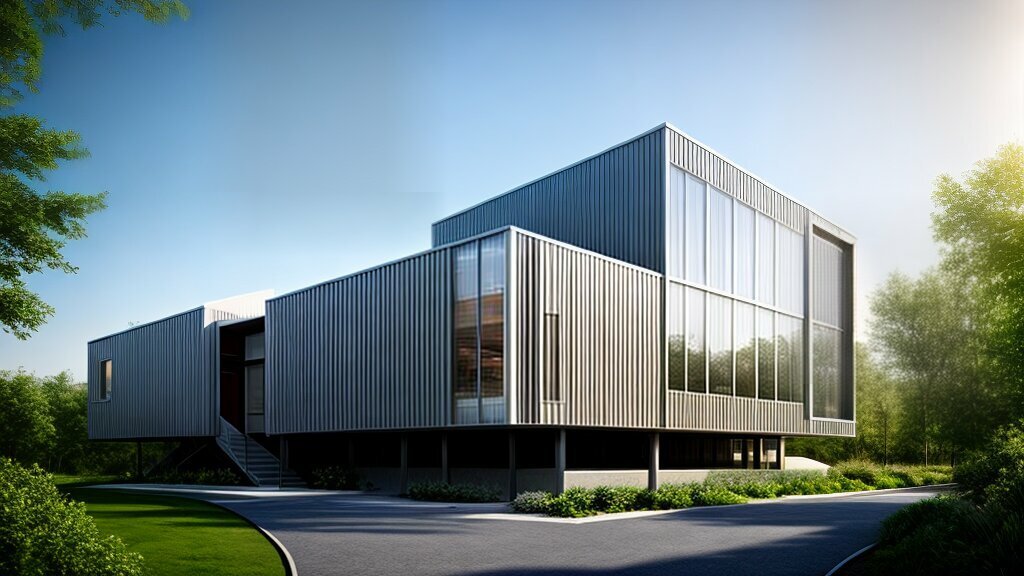Net-zero energy buildings: Case studies and best practices
Net-zero energy buildings (NZEBs) represent a significant advancement in sustainable architecture, aiming to achieve a balance between energy consumption and renewable energy generation. Here’s a detailed exploration of case studies and best practices that showcase successful implementations of NZEBs.
1. Definition and Benefits of Net-Zero Energy Buildings
Sustainability Goals:
- Energy Neutrality: NZEBs produce as much energy as they consume on an annual basis, typically through renewable sources like solar panels or wind turbines.
- Environmental Impact: Reducing greenhouse gas emissions and reliance on fossil fuels, contributing to climate change mitigation efforts.
2. Successful Case Studies of Net-Zero Energy Buildings
Exemplary Projects:
- The Bullitt Center (Seattle, USA): A six-story office building that achieved NZEB status through passive design strategies, solar panels, and rainwater harvesting.
- BedZED (London, UK): A mixed-use development featuring sustainable design principles, including solar panels, efficient insulation, and green roofs, achieving significant energy savings.

3. Key Design Strategies for Net-Zero Energy Buildings
Best Practices:
- Passive Design Techniques: Maximizing natural ventilation, daylighting, and thermal mass to reduce heating and cooling loads.
- High-Performance Building Envelopes: Using insulation, triple-glazed windows, and airtight construction to minimize energy loss.
- Renewable Energy Integration: Installing photovoltaic (PV) panels, wind turbines, or geothermal systems to generate onsite renewable energy.
4. Energy-Efficient Systems and Technologies
Advanced Solutions:
- HVAC and Lighting Systems: Implementing energy-efficient heating, ventilation, and air conditioning (HVAC) systems, LED lighting, and smart controls to optimize energy use.
- Building Automation: Using sensors and advanced controls to adjust energy consumption based on occupancy, weather conditions, and energy demand.
5. Life Cycle Cost Analysis and Financial Benefits
Economic Considerations:
- Long-Term Savings: NZEBs typically experience lower operating costs over their lifecycle due to reduced energy bills and maintenance expenses.
- Return on Investment (ROI): Calculating payback periods and financial incentives such as tax credits, grants, or rebates for investing in energy-efficient technologies.
6. Regulatory and Certification Standards
Compliance and Recognition:
- Green Building Certifications: Pursuing certifications like LEED (Leadership in Energy and Environmental Design) or Passive House to demonstrate compliance with stringent energy efficiency and sustainability criteria.
- Building Codes: Adhering to local building codes and standards that promote energy conservation and renewable energy use in construction.
7. Challenges and Overcoming Barriers
Implementation Hurdles:
- Upfront Costs: Initial investments in renewable energy systems and high-performance building materials may pose financial challenges.
- Technical Expertise: Requires specialized knowledge and collaboration among architects, engineers, contractors, and energy consultants.
8. Educational Outreach and Knowledge Sharing
Industry Engagement:
- Workshops and Seminars: Hosting educational events to share NZEB case studies, best practices, and lessons learned with architects, developers, and policymakers.
- Online Resources: Accessing tools, guidelines, and research publications that facilitate the design, construction, and operation of NZEBs.
9. Future Trends and Innovation in Net-Zero Energy Buildings
Advancing Technologies:
- Battery Storage Solutions: Integrating energy storage systems to store excess renewable energy for later use, enhancing grid stability and energy resilience.
- Zero Carbon Initiatives: Aligning with global initiatives to achieve net-zero carbon emissions across the built environment by 2050.
10. Conclusion
Net-zero energy buildings represent a sustainable solution to reducing carbon footprints and advancing energy independence in the built environment. Through innovative design strategies, efficient technologies, and rigorous performance standards, NZEBs demonstrate how architecture can lead the way towards a more sustainable future. By studying successful case studies and embracing best practices, architects and stakeholders can contribute to a resilient and energy-efficient built environment that benefits both present and future generations.



